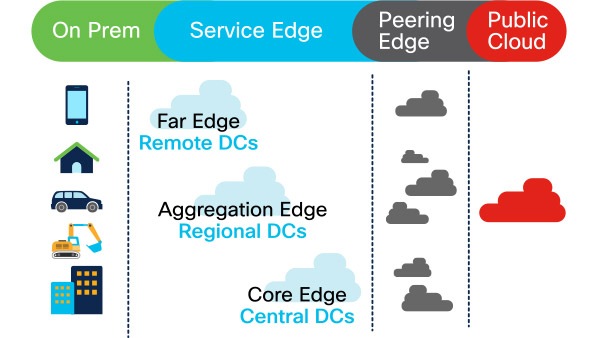4 Easy Facts About Edge Networking Described
Table of ContentsNot known Facts About Edge NetworkingEdge Networking - The Facts



Last Mile = The final networking action in between end gadgets and the net, typically from the ISP to the end gadget. CDN's try to put their cache web servers as near to the ISP in order to lower latency as long as feasible. Hop = When networking web traffic jumps in between networking gadgets, typically going from one network to another - Edge Networking. Utilizing traceroute, I can see that between me and also nytimes. com is 40+ hops (with the Last Mile of my ISP to me conveniently being the very first 6-7), as the traffic makes it way from my residence network to my ISP as well as across the web to their service.
Edge Networking Things To Know Before You Get This
Content Shipment Network (CDN) = Localized caching services that are able to significantly decrease the tons on origin servers & the data transfer to get to them. These are worldwide positioned, in order for end visit this site right here users to strike the cache nearest them, greatly decreasing the latency to end individuals. RTT is substantially decreased, that makes for a quicker as well as a lot more receptive app or site. The cache gets loaded from the origin server, either from each cache doing it individually, or with one working as master and also dispersing it to various other caches in the CDN's network. This considerably minimizes the variety of times that information is asked for from origin servers, which subsequently decreases framework as well as data transfer expenses.
Conventional request/response cycle has numerous phases (and also lots of jumps per phase)With a CDN functioning as cache, the content will be much nearer, and the RTT much quicker: Trypical CDN cycle, considerably decreasing the number of demands to origin, Example: NYTimes has a publishing system, with facilities that holds its material, as well as administration software program to track that web content & take care of the operations around publishing new submissions. NYTimes. com does not serve up articles from its NYC data facility or its AWS facilities for every global user-- it disperses the content around the world to CDNs, in order to have it closer to the customers accessing it, and to significantly decrease facilities & data transfer expenses (outbound traffic from its web servers, as well as the extra lots on those web servers). CDNs have hence gone wild with producing POPs around the world, just to stay rapid (as well as relevant). CDNs help disperse content throughout the world, According to market leader Akamai, "CDNs carry almost fifty percent of the globe's web's view it web traffic." This is an industry with a whole lot of players, including AWS with their Cloud, Front service. Great deals of content-related capacities have ultimately chopped up, as CDNs attempt to stay competitive. Cache mgmt interfaces - APIs that clients can make use of to manage cached material, Cleanup - remove or freshen cache web content, Dynamic content distribution - not just fixed web content [i. e. post comments] Prefetch - obtain the content prior to the individuals ask for it, my latest blog post Beginning guard - have one cache act as master that is the just one that speaks with origin, and also it then disperses material to other caches, Compression - make your web content smaller sized as well as so much less expensive to send & store, Photo optimization - compress photos while keeping high resolution, Video CDN - concentrating on the extra complex abilities and also compression formats of video streaming for video as needed (VOD) Real-time video clip streaming - extending the Video CDN to be geared for relaying real-time occasions, like sporting activities as well as shows, These type of functions have actually enabled certain CDNs to obtain in advance of others in the market, however generally, all of them have actually caught up and currently provide most/all of these.